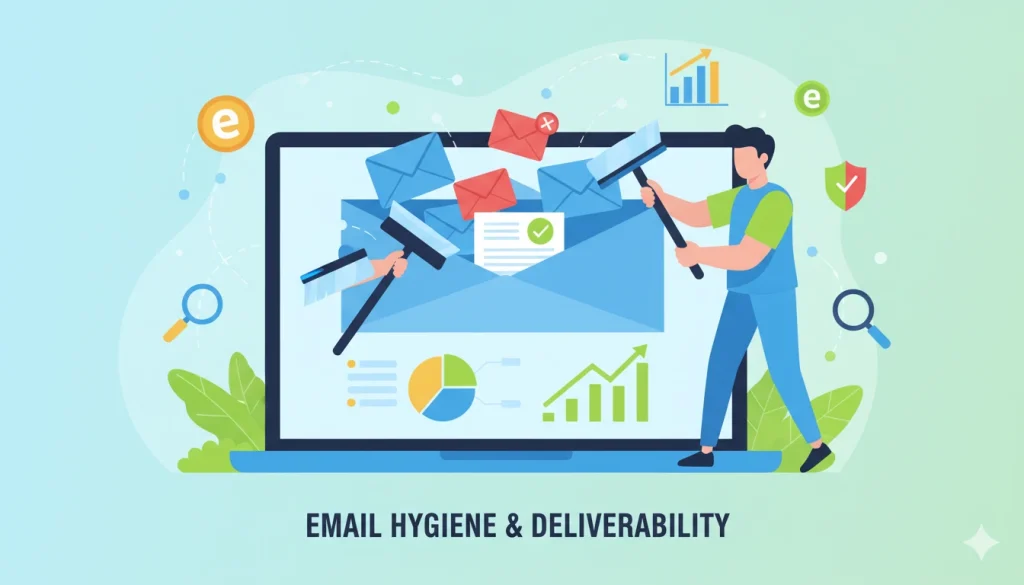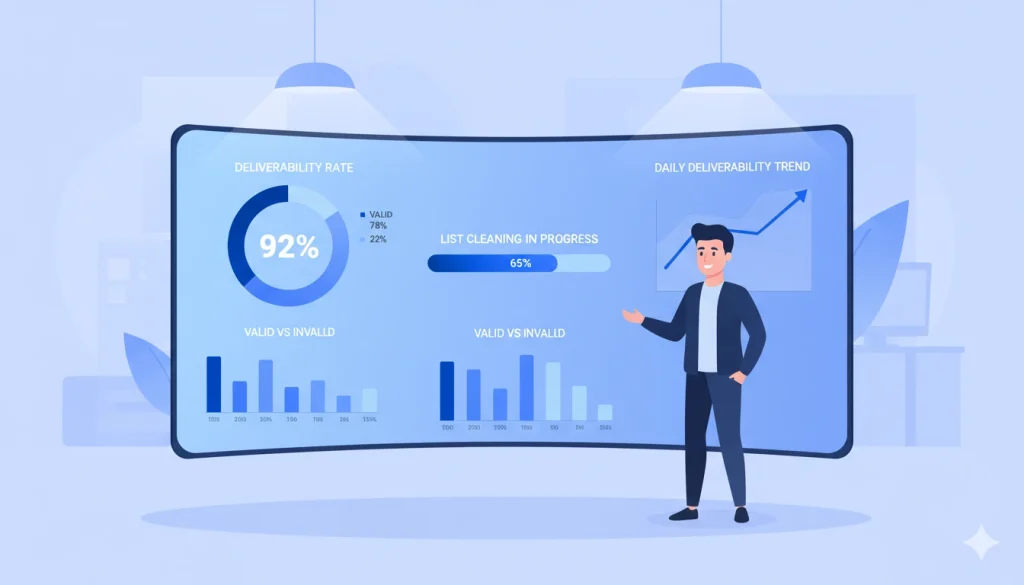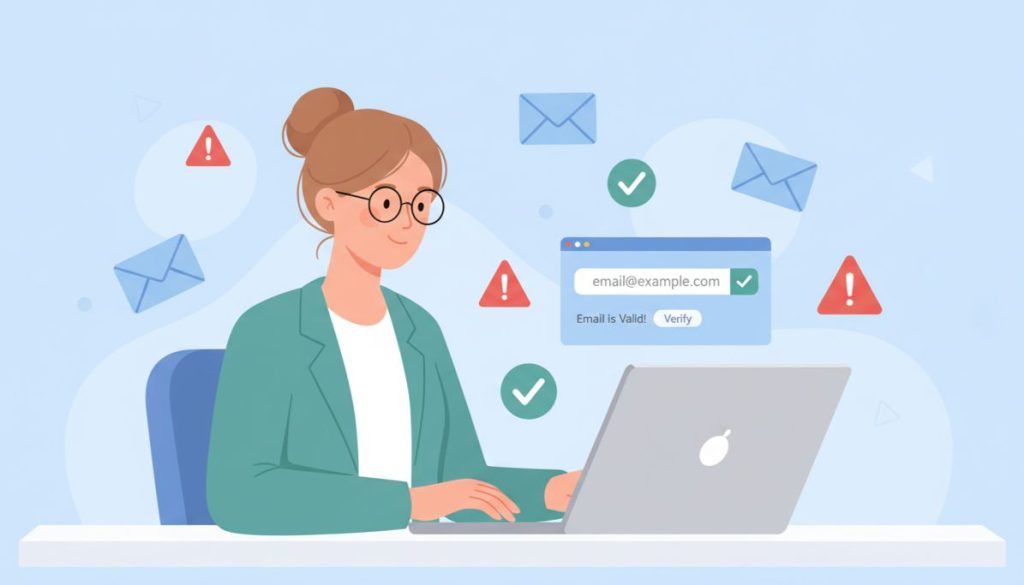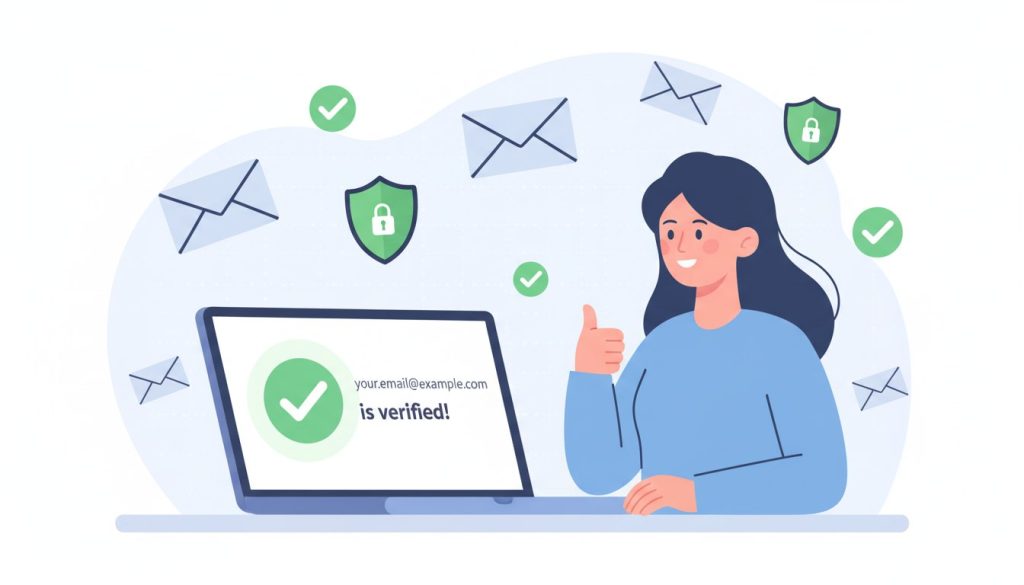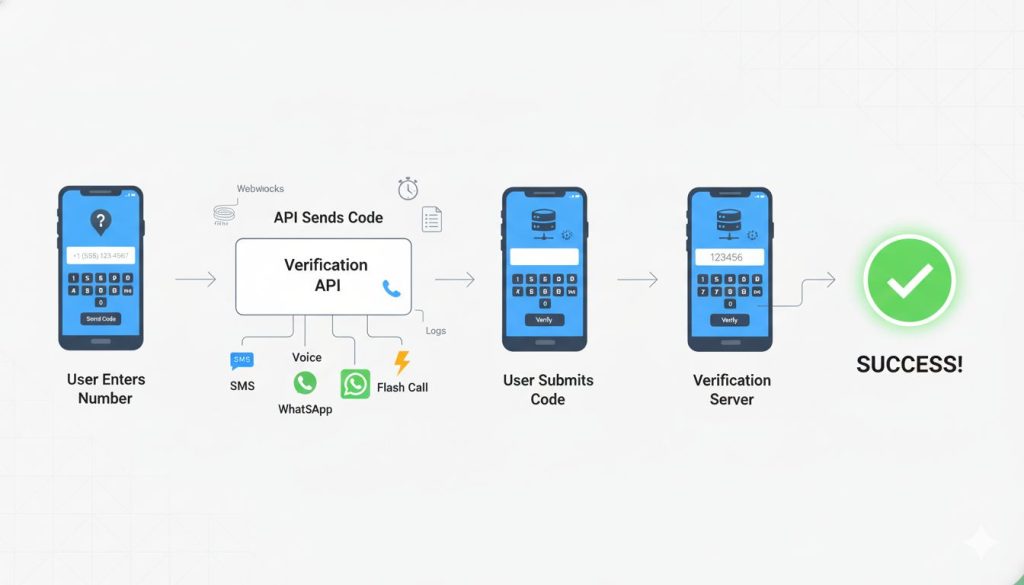You already know this — email is the backbone of most customer communication. But what many people don’t realize is how much a single invalid email can cost you. It can mess up campaign analytics, hurt deliverability, and even get your sender domain flagged. The good news is, checking email validity isn’t complicated once you understand how it works. In this guide, we’ll walk through what makes an email valid, how to test it properly, and what tools can save you time. By the end, you’ll know exactly how to keep your email lists clean and your messages landing where they should.
What “Email Validity” Really Means
You want confidence that the address you collected can receive a message. You also want to know what that confidence does and does not cover.
Put Simply: Can This Address Receive Mail?
Validity answers one thing. The email address is valid if the mailbox can accept traffic and the domain resolves. You run basic checks to confirm the email address exists and can take delivery.
Valid ≠ Deliverable ≠ Engaged
You can check if an email is valid and still miss filters, throttles, or inactivity. Deliverability is whether a send reaches the inbox. Engagement is whether someone opens or clicks. Do not mix them.
Where Validation Fits In Your Stack
Use validation early to validate email addresses at capture, then verify email addresses before sending to new segments. It supports consent, targeting, and list hygiene.
The Fast Checks: Syntax, Typos, Domain
Start with the basics. These are quick, safe, and catch most simple issues before you send.
Catch The Obvious: Syntax And Formatting
Look for the “@,” a local part, and a resolvable domain. Reject stray spaces, multiple “@,” and illegal characters. These email address simple methods prevent many bad entries. An email checker should apply RFC rules conservatively.
Fixable Human Errors: Typos You Can Auto-Suggest
People rush. Addresses could contain typing errors like gmal.com or yaho.co. Offer smart suggestions using edit distance and allow lists. These are practical methods you can try in real time without blocking good users.
Domain Health Snapshot: Is The Domain Even Real?
Do a quick DNS check. Confirm the zone exists and is active. If you must, search the address gently, or look it up in internal history. Skip heavy probes here. You only want to avoid nonexistent or suspicious domain pitfalls.
The Deep Checks: DNS, MX, SMTP
When the fast checks pass, go deeper. This is where you separate healthy addresses from high-risk ones.
DNS Lookups: Laying The Groundwork
Start with the domain. Resolve A or AAAA. Note CNAME chains that front services. For mail, MX matters most. You can also run ip address lookup for context when abuse is suspected. Do not overreach.
MX Records: Who Accepts The Mail?
If MX records exist, a real mail server is advertised. No MX usually means the domain is not ready for mail. Some hosts accept mail on the A record. Treat that as a caution flag. Record the hostnames you find for later scoring.
SMTP Handshake (Without Being A Nuisance)
Open a lightweight connection to the email server. Use HELO or EHLO. Set MAIL FROM and probe RCPT TO. Respect timeouts. Back off on temp errors. Greylisting happens. Smart validators space retries and avoid rapid-fire sequences. That protects relationships with email service providers and keeps you off blocklists.
Catch-All Domains: Why “Always Accepts” Is Tricky
Some domains accept every address. That keeps forms flowing but hides invalid addresses. Mark these as unverifiable, not confirmed. Pair results with sending data and soft onboarding. If needed, check the domain’s IP against internal risk models and throttle until engagement proves the mailbox is real.
Beyond Validity: Deliverability & Reputation
Validation starts the story. Inbox placement and trust finish it.
SPF, DKIM, DMARC: Do They Apply To Recipients?
These are sender controls. Still, recipient policies signal risk. If their domain enforces DMARC, treat bounces seriously. Your alignment matters most for email deliverability, but the other side’s posture informs your expectations.
Blocklists And Spam Traps: Silent Reputation Killers
A clean-looking address can still be toxic. Use a tool identify spam traps signal set where possible. Watch complaint rates and sudden volume swings. Service providers may mark patterns, not single sends.
Engagement History: The Strongest Long-Term Signal
Track opens, clicks, and replies. Remove invalid addresses fast if bounces rise. Verify emails on reactivation, then watch if messages are delivered to the intended mailbox. If you treat everything as good, you risk hurting your sender’s reputation. Continuous feedback is your safety net.
Risky Addresses And How To Treat Them
Some addresses carry more risk than others. You should spot them early and handle them with care.
Role Accounts And Aliases
“info@” and “sales@” often route to teams. Engagement is low. Many live on mailing lists that rotate staff. Treat replies as a bonus, not a guarantee to the intended recipient. If you treat every role inbox as valid, you risk hurting metrics across sends.
Disposable And Temporary Emails
Flag any disposable email address pattern. Separate legitimate addresses from fake with light friction, not hard blocks. Watch for invalid, inactive, or parked domains, and also for existing or invalid domains that flip state.
Typosquats And Lookalikes
Scan for homoglyphs and near clones of major brands. Use an email address checker to test the email address without sending. Pair results with signals from email providers, then segment. When in doubt, throttle volume until behavior proves the email account is safe.
Validation In Your Signup Flow
Keep it smooth. Help users succeed without slowing them down.
Gentle UX: Validate Without Friction
Add a customizable website widget that allows users to choose an email validation path per form. Run email address validity checkers as people type. Surface small hints, like check if your email is spelled right. Use a tool to find syntax errors quietly.
Double Opt-In: The Gold Standard
Send a confirmation email to the address within a few minutes. That single click confirms control and reduces risk. If needed, send a message reminder once. You can also test the email address in parallel, then complete email verification after the click.
Accessibility And Mobile First
Use readable inputs and large tap targets. Provide a user-friendly dashboard for your team to review edge cases. Connect alerts to major platforms like Gmail rules so replies land cleanly. Keep retries smart with anti-greylisting technology in back-end queues.
Cleaning A Legacy List Safely
Old data needs care. Move methodically and measure every step.
Start With A Segmented Pilot
Sample recent signups, buyers, and dormant contacts. Use an email validation tool on each slice. Mark non-existent or invalid results. Where needed, perform an ip address check on sources and confirm the domain’s ip address. Document outcomes in Google Sheets for easy sharing.
Warm Your IP/Domain Gradually
Ramp volume carefully. Pause any group that spikes or bounces. Keep traffic free of spam traps by removing risky patterns early. Watch for spam traps and catch signals in seed tests.
Suppression Lists And Governance
Centralize policy. Record why an address was paused. Some vendors claim repeat verifications are free or that verifications are free within windows. Treat that as a budgeting detail, not a strategy. If rechecks pass, reintroduce slowly. If they fail, retire segments and protect your sender standing.
Edge Cases You’ll Actually Encounter
Expect oddities. Handle them with rules you can explain.
Plus Addressing And Aliases
Decide if “name+promo@” rolls up or stays unique. Let goals drive the choice. For offers, keep it unique. For support, merge.
Internationalized Emails (EAI)
Respect Unicode local parts and IDN domains. Do not over-sanitize an email message field just to fit old code. Store as sent. Validate email to distinguish real formats that differ.
Forwarders And Shared Inboxes
Forwarders can pass checks but hide engagement. Track replies from major platforms like Gmail and others to see if the mail is delivered to the intended recipient. Use behavior to email to distinguish legitimate interest from noise. If quality lags, slow frequency, or pause.
Choosing A Validation Tool Wisely
Pick tech that you trust. Make it easy to run and easy to audit.
Accuracy You Can Audit
Ask for proof of MX and SMTP checks and logs. A dedicated email verification tool should separate legitimate addresses from fake and highlight nonexistent or invalid patterns. It should also let you perform an IP address check when abuse is suspected.
Latency, Throughput, And Pricing
Real-time should respond in a few minutes or less. Look for anti-greylisting technology and smart retries. Some services, using the coupon list discounts or say repeat verifications, are free. Confirm limits.
Security, Privacy, And Compliance
Choose an email validation service with clear retention, export controls, and region options.
Workflow Fit
Look for a convenient email validation system with a user-friendly dashboard, Google Sheets sync, and an account for enhanced collaboration. A team account for enhanced workflows helps. In short, choose a tool for your business that your team will actually use.
How to Check if an Email Address is Valid: Final Thoughts
Email validity isn’t just a technical checkbox—it’s a craft that marketers must master if they want reliable, respectful communication. When you know your list is clean, you protect your sender reputation, improve deliverability, and keep your campaigns meaningful. Start small: test a few addresses, refine your process, and expand.
Over time, this discipline saves money and builds trust with your audience. And if you want a convenient, accurate way to handle real-time or bulk checks, our email validity checking service can make the process effortless while keeping your data secure. Reliable emails mean stronger relationships—and better results. Check if an email address is valid today!


